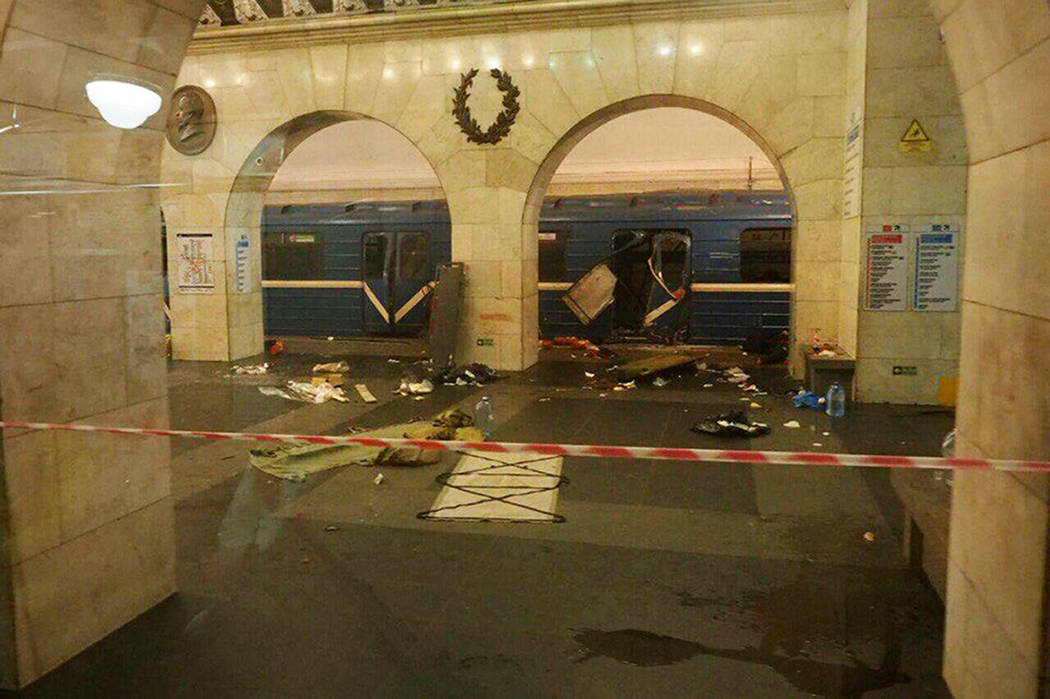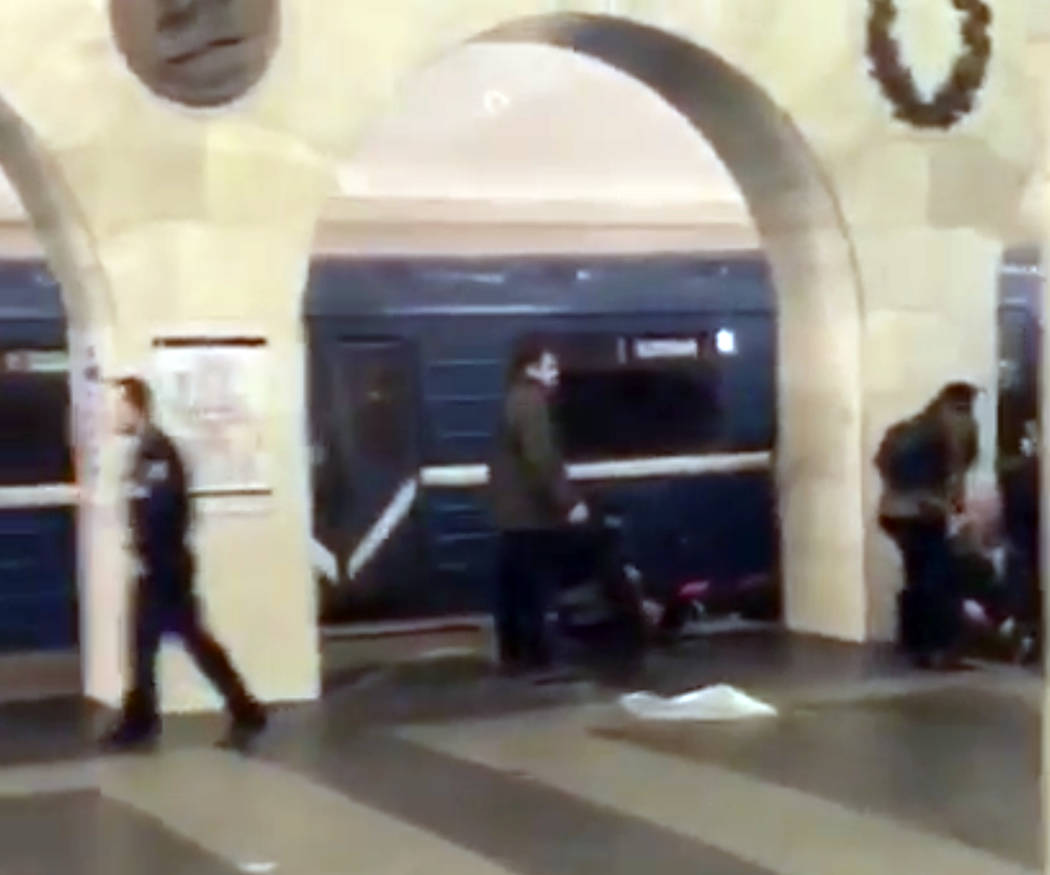Subway explosion in Russia reportedly kills at least 10
Within two hours, Russia authorities found and deactivated another bomb at a separate busy St. Petersburg subway station, Vosstaniya Square by the Moscow railway station, Russia’s National Anti-Terrorist Committee said.
The unidentified explosive device went off at 2:20 p.m. on a train that was leaving the Technology Institute station and heading to the Sennaya Square station, the agency said.
Social media users posted photographs and video from the Technology Institute subway station, showing injured people lying on the floor outside a train with a mangled door. Frantic commuters were reaching into doors and windows, trying to see if anyone was there, and shouting “Call an ambulance!”
“Everything was covered in smoke, there were a lot of firefighters,” Maria Smirnova, a student on a train behind the one where a bomb went off, told the Dozhd television channel. “Firefighters shouted us to run for the exit and everyone ran. Everyone was panicking.”
BREAKING: St. Petersburg subway explosion. Casualties reported. pic.twitter.com/Zet6bHgHOX
— Paul Joseph Watson (@PrisonPlanet) April 3, 2017
,
The St. Petersburg subway immediately shut down all of its stations and the national anti-terrorism body said security measures would be tightened all key transport facilities across Russia. Maxim Liksutov, Moscow’s deputy mayor, said that included tightening security on the subway in the Russian capital.
St. Petersburg, Russia’s second-largest city with over 5 million residents, is the country’s most popular tourist destination and the two stations affected by the blast are some of the subway’s busiest.
Nataliya Maksimova was running late for a dentist appointment and entered the subway near the explosion site shortly after the blast.
“If I hadn’t been running late, I could have been there,” she told The Associated Press.
Putin was in St. Petersburg on Monday for talks with Belarusian President Alexander Lukashenko, and went ahead with the talks after appearing on Russian television to speak about the attack.
“Law enforcement agencies and intelligence services are doing their best to establish the cause and give a full picture of what happened,” Putin said.
St. Petersburg governor Georgy Poltavchenko was overseeing the rescue effort.
Russian transport facilities have been the target of previous terror attacks.
Two suicide bombings in the Moscow subway on March 29, 2010, killed 40 people and wounded more than 100 people. Chechen rebel leader Doku Umarov claimed responsibility for that attack by two female suicide bombers, warning Russian leaders that “the war is coming to their cities.”
The high-speed Moscow-to-St. Petersburg train was also bombed on Nov. 27, 2009, in an attack that left 26 dead and some 100 injured. Umarov’s group also said he ordered this attack.
Russian airports have also been hit by attacks. On Jan. 24, 2011, a suicide bomber hit Moscow’s Domodedovo Airport, killing 37 people and wounding 180. The same airport in August 2004 saw Islamic suicide bombers board two airplanes and bring them down, killing a total of 90 people.


















